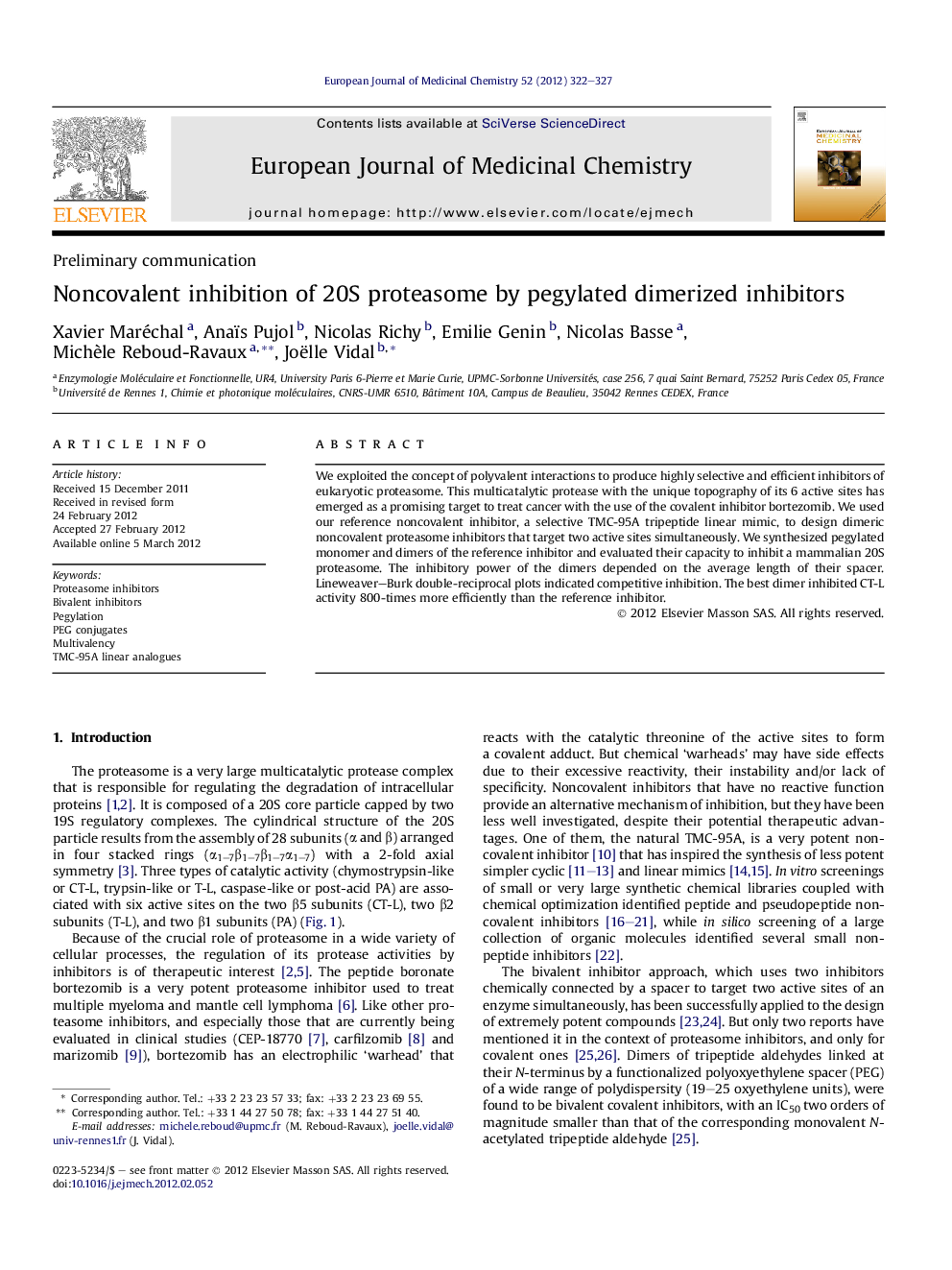| Article ID | Journal | Published Year | Pages | File Type |
|---|---|---|---|---|
| 1392968 | European Journal of Medicinal Chemistry | 2012 | 6 Pages |
We exploited the concept of polyvalent interactions to produce highly selective and efficient inhibitors of eukaryotic proteasome. This multicatalytic protease with the unique topography of its 6 active sites has emerged as a promising target to treat cancer with the use of the covalent inhibitor bortezomib. We used our reference noncovalent inhibitor, a selective TMC-95A tripeptide linear mimic, to design dimeric noncovalent proteasome inhibitors that target two active sites simultaneously. We synthesized pegylated monomer and dimers of the reference inhibitor and evaluated their capacity to inhibit a mammalian 20S proteasome. The inhibitory power of the dimers depended on the average length of their spacer. Lineweaver–Burk double-reciprocal plots indicated competitive inhibition. The best dimer inhibited CT-L activity 800-times more efficiently than the reference inhibitor.
Graphical abstractFigure optionsDownload full-size imageDownload as PowerPoint slideHighlights► Bivalency principle was used to design noncovalent proteasome inhibitors. ► Pegylated dimers of a TMC-95A linear mimic were designed and synthesized. ► The inhibition of CT-L activity depended on the PEG spacer length. ► The inhibition potency (pegylated dimer/reference inhibitor) was increased 800-fold. ► A new generation of selective noncovalent proteasome inhibitors is described.
